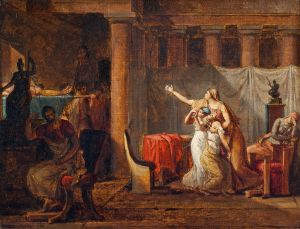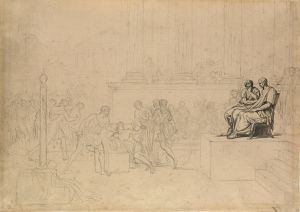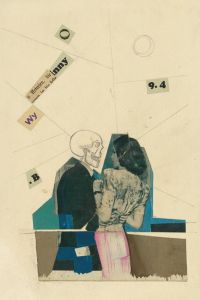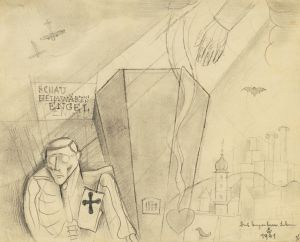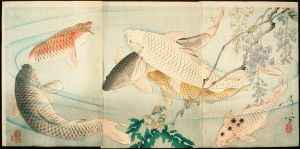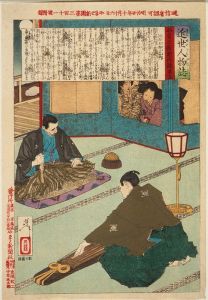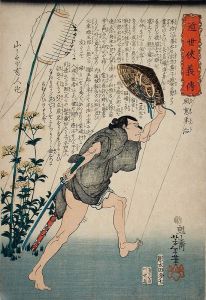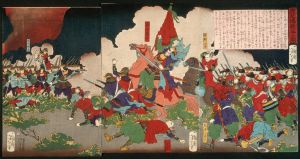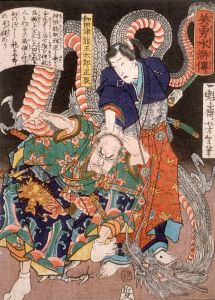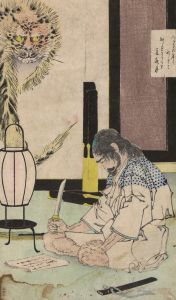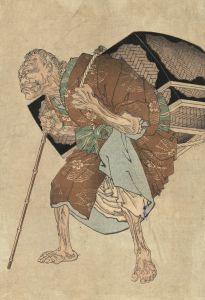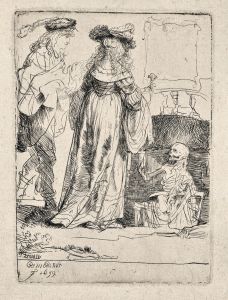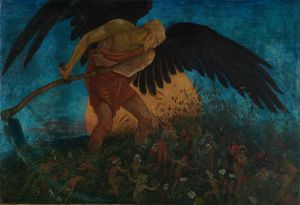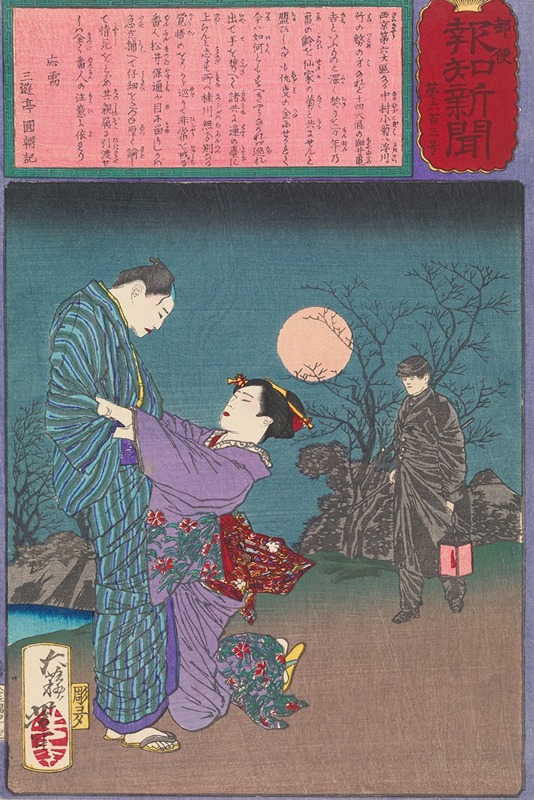
The Patrolman Matsui Yasumichi Prevents a Double Suicide
A hand-painted replica of Tsukioka Yoshitoshi’s masterpiece The Patrolman Matsui Yasumichi Prevents a Double Suicide, meticulously crafted by professional artists to capture the true essence of the original. Each piece is created with museum-quality canvas and rare mineral pigments, carefully painted by experienced artists with delicate brushstrokes and rich, layered colors to perfectly recreate the texture of the original artwork. Unlike machine-printed reproductions, this hand-painted version brings the painting to life, infused with the artist’s emotions and skill in every stroke. Whether for personal collection or home decoration, it instantly elevates the artistic atmosphere of any space.
"The Patrolman Matsui Yasumichi Prevents a Double Suicide" is a woodblock print by the renowned Japanese artist Tsukioka Yoshitoshi, who is celebrated for his contributions to the ukiyo-e genre during the late Edo and early Meiji periods. Yoshitoshi is often recognized for his innovative approach to traditional Japanese art, blending classical themes with modern sensibilities and techniques.
This particular artwork is part of Yoshitoshi's series "Tsuki hyakushi" (One Hundred Aspects of the Moon), which was produced between 1885 and 1892. The series is considered one of Yoshitoshi's masterpieces, showcasing his mature style and his fascination with the moon as a symbol of beauty, mystery, and emotion. Each print in the series features a story or scene that is somehow connected to the moon, drawing from history, folklore, literature, and contemporary life.
"The Patrolman Matsui Yasumichi Prevents a Double Suicide" depicts a dramatic scene inspired by a real-life event. The print illustrates the moment when a vigilant patrolman, Matsui Yasumichi, intervenes to stop a couple from committing a double suicide, a practice known as "shinju" in Japanese culture. Double suicides were often romanticized in Japanese literature and theater, seen as an ultimate act of love and devotion. However, they were also a social issue that authorities sought to prevent.
In Yoshitoshi's depiction, the patrolman is shown in a dynamic pose, capturing the tension and urgency of the moment. His intervention is portrayed as both heroic and compassionate, reflecting the societal values of the time that emphasized the preservation of life and the responsibilities of public officials. The composition of the print is carefully balanced, with the figures arranged to draw the viewer's eye to the central action, while the moon casts a serene light over the scene, adding an element of tranquility amidst the drama.
Yoshitoshi's use of color and line work in this print exemplifies his mastery of the woodblock printing technique. The subtle gradations of color and the intricate details of the characters' expressions and clothing demonstrate his skill and attention to detail. The print not only tells a compelling story but also serves as a visual exploration of human emotions and societal norms.
"The Patrolman Matsui Yasumichi Prevents a Double Suicide" is a testament to Yoshitoshi's ability to capture complex narratives and emotions within the confines of a single image. It reflects his deep understanding of both traditional Japanese culture and the changing social landscape of the Meiji era. Through this work, Yoshitoshi invites viewers to contemplate the delicate balance between duty and desire, life and death, and the enduring power of human compassion.






